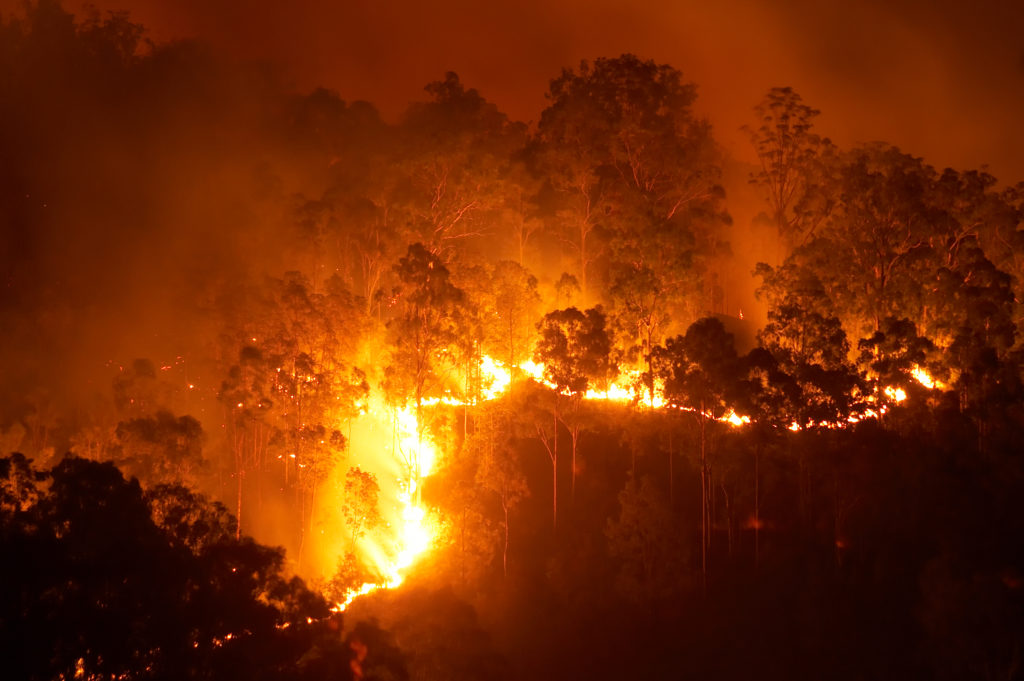BMP Fundamentals: Safeguarding Your Property Versus Bushfire Risks
BMP Fundamentals: Safeguarding Your Property Versus Bushfire Risks
Blog Article
The Relevance of Bushfire Monitoring in Fire Protection
In the world of fire security, the significance of reliable bushfire management can not be understated. As neighborhoods around the world face raising circumstances of wildfires, the aggressive technique to avoid and mitigating these all-natural calamities through calculated bushfire administration approaches has arised as a vital aspect. Past the prompt threat to human life and residential or commercial property, the interplay between bushfire management and environmental conservation, area participation, and climate change poses complex challenges that need thorough solutions.
Importance of Proactive Bushfire Avoidance
Aggressive bushfire prevention approaches are essential in minimizing the devastating impacts of wildfires on areas and ecological communities. One essential aspect of positive bushfire prevention is gas administration.
Furthermore, producing firebreaks - cleared locations where plants is purposefully removed to produce an obstacle to quit the progress or slow of a bushfire - is one more essential aggressive step. By applying these techniques, the spread of wildfires can be limited, safeguarding both human lives and the atmosphere. Informing the public on fire security practices and advertising area understanding regarding the value of bushfire avoidance are vital components of aggressive strategies. Eventually, positive bushfire prevention plays a substantial function in securing communities and ecosystems from the harmful impacts of wildfires.
Function of Community Involvement in Fire Defense
Engaging the community in fire defense initiatives is essential to improving the performance of aggressive bushfire avoidance techniques. Neighborhood engagement plays an essential duty in promoting a cumulative understanding of the dangers postured by bushfires and the importance of readiness steps. By including neighborhood homeowners, authorities can share crucial details on fire security practices, evacuation procedures, and early warning systems, equipping individuals to take positive steps to protect their lives and residential properties.
By promoting a society of preparedness and collaboration, areas can enhance their capability to respond efficiently to bushfire emergency situations, minimizing the influence on lives and homes. Ultimately, area involvement is a cornerstone of thorough fire security approaches, stressing the significance of collective action in guarding susceptible locations from the hazard of bushfires.
Significance of Wild Animals Conservation in Bushfire Management
Conservation of wildlife plays an important function in reliable bushfire monitoring methods, making sure the protection of diverse communities and biodiversity in fire-prone areas. Wild animals conservation is vital as it adds to the overall durability of environments, aiding in their capacity to withstand and recover from the impact of bushfires. By conserving environments and safeguarding different varieties, the natural equilibrium within these communities is kept, which is vital for their lasting wellness and sustainability.
Furthermore, wild animals preservation likewise assists in minimizing the risk and strength of bushfires. Healthy and balanced ecosystems with unspoiled wildlife populations can act as natural firebreaks, reducing the spread of fires and restricting their destructive capacity (Bushfire Management Plan). Certain animal varieties, like burrowing animals or birds that spread out seeds, play unique duties in check this protecting against fires or helping in the post-fire regeneration of environments
Including wild animals preservation into bushfire monitoring methods is not only important for safeguarding biodiversity however additionally for advertising the overall health and strength of environments when faced with boosting fire hazards.
Benefits of Strategic Gas Decrease Programs
Strategically executing fuel decrease programs is necessary in reducing the threat and impact of bushfires in fire-prone areas. These programs entail regulated burning, mechanical cleaning, and various other approaches to decrease the quantity of combustible plant life available to fuel wildfires. By purposefully lowering fuel loads in key areas, such as close to property areas or vital framework, the intensity and spread of bushfires can be substantially reduced.
One of the primary benefits of fuel decrease programs is the improvement of overall fire durability in an ecosystem. By producing critical gas breaks and reducing the continuity of greenery, these programs help to disrupt the path of a bushfire, making it easier for firemens to snuff out the blaze and consist of. Furthermore, gas decrease programs can safeguard biodiversity by stopping exceedingly extreme fires that can ravage habitats and endanger wildlife top article populaces.
Furthermore, these programs can also guard human lives and property by reducing the danger of devastating fires that posture a considerable threat to areas. Eventually, tactical fuel decrease programs play a vital role in positive bushfire management and cultivating a more secure setting for both people and nature.
Impact of Climate Change on Bushfire Threat

Higher temperature levels lead to drier plant life, making it a lot more vulnerable to ignition. Minimized rains in particular areas lengthens drought conditions, additionally raising the flammability of the landscape. Additionally, the changing climate has actually modified wind patterns and weather, bring about even more erratic fire habits and quick fire spread.
As the climate remains to alter, the regularity and strength of bushfires are expected to increase, requiring a flexible and proactive method to bushfire monitoring. Techniques need to advance to represent the changing threat landscape, integrating climate estimates and considering long-lasting resilience in fire monitoring planning. Attending to the effect of climate change on bushfire threat is critical in developing reliable methods to protect lives, property, and the atmosphere.
Final Thought
To conclude, proactive bushfire prevention, neighborhood involvement, wildlife preservation, strategic gas reduction programs, and consideration of climate adjustment are vital components in efficient fire defense. By implementing these strategies, we can better handle bushfire risks and safeguard both human lives and the setting. BMP. It is imperative that stakeholders interact to focus on these actions to decrease the devastating influence of bushfires site on communities and environments

As the climate proceeds to transform, the frequency and strength of bushfires are expected to increase, demanding a adaptive and positive strategy to bushfire management.In conclusion, positive bushfire prevention, neighborhood engagement, wildlife conservation, strategic fuel reduction programs, and factor to consider of climate change are vital parts in reliable fire security.
Report this page